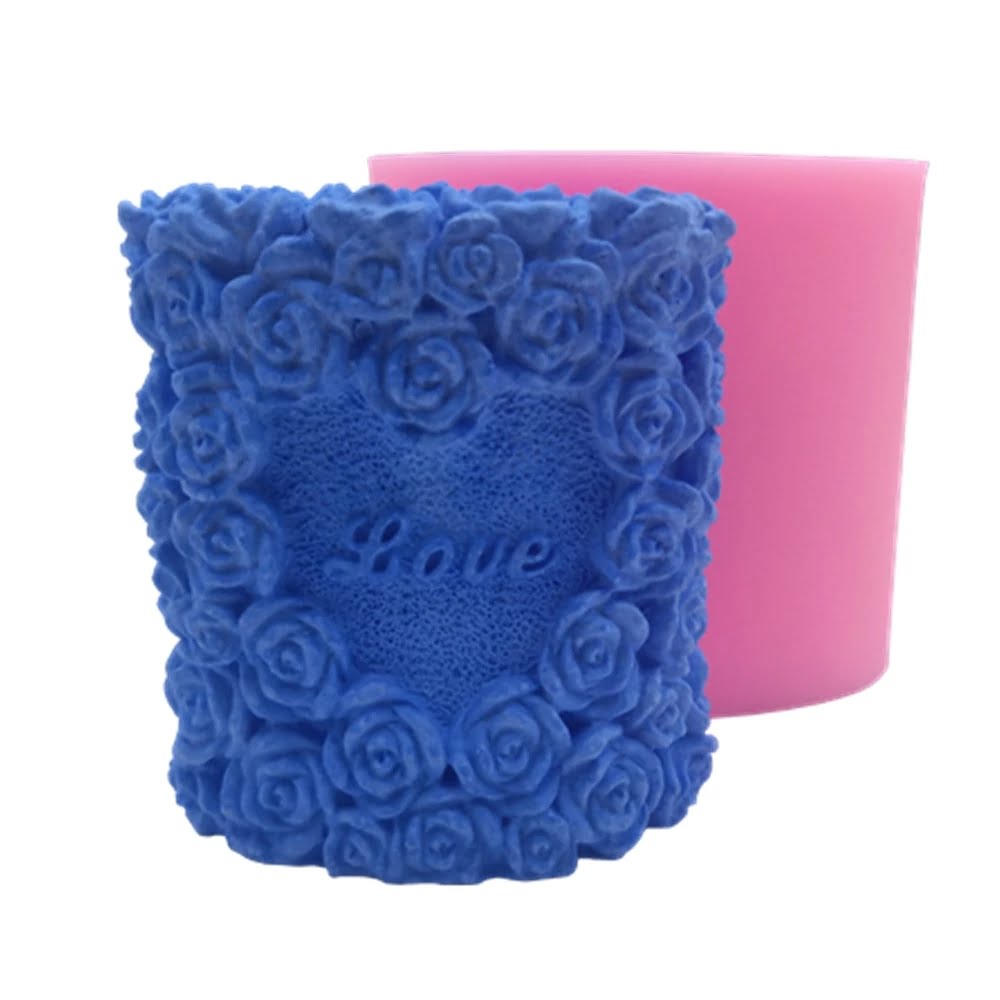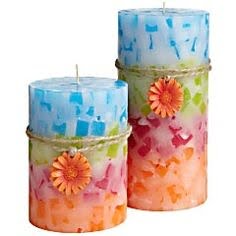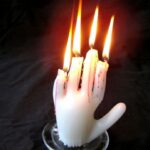Candle making is not just about the art of creating beautiful and decorative pieces. One of the most important aspects of candle making is the throw, which refers to the ability of a candle’s fragrance to fill a space and emit its scent into the surrounding environment. The throw is what truly brings a candle to life, captivating our senses and creating a cozy atmosphere in any room.
In this article, we will explore the concept of throw in candle making and delve into its significance. We will discuss what exactly throw is, how it is defined, and why it plays such a crucial role in the success of a candle. Understanding throw is essential for both professional and hobbyist candle makers, as it directly impacts customer satisfaction and the overall quality of their creations.
Furthermore, we will examine the various factors that influence the throw of a candle, such as fragrance oil and wax blend. Choosing the right fragrance oil can make all the difference in achieving optimal throw, and different wax options can enhance or hinder scent diffusion. We will provide valuable tips and recommendations for selecting the best fragrance oils and waxes to achieve maximum throw in your candles.
Overall, this article aims to shed light on the importance of throw in candle making and provide practical knowledge on how to achieve optimal scent diffusion. Whether you are just starting out or have been making candles for years, understanding throw will elevate your craft and leave you with beautifully scented candles that bring joy to anyone who experiences them.
What is Throw
Throw is a term used in the candle making industry to describe the strength and distance at which a candle’s fragrance can be detected when it is burning. It refers to how well a candle releases its scent into the surrounding area and how far that scent is able to disperse. Understanding the concept and definition of throw is essential for candle makers who want to create high-quality products with strong, long-lasting fragrance.
In simple terms, throw can be defined as the ability of a candle’s fragrance to fill a space with its scent when it is lit. A candle with good throw will release its fragrance effectively, allowing the scent to travel throughout a room and even beyond. On the other hand, a candle with poor throw may have a weak or barely noticeable scent that doesn’t spread far.
The concept of throw is influenced by various factors such as the quality and concentration of fragrance oil used in the candle, as well as the type of wax blend. The amount of fragrance oil added to the wax will affect how powerful the scent will be when it is burned. Additionally, different types of wax have different properties that can affect how well they hold and release fragrance.
To ensure optimal throw in their candles, it is important for candle makers to choose high-quality fragrance oils that are specifically designed for use in candles. These oils are typically formulated to have excellent scent retention and dispersal properties. Experimenting with different waxes can also help achieve better throw as each type of wax has unique characteristics that may enhance or hinder scent diffusion.
| Factors Affecting Throw | Description |
|---|---|
| Fragrance Oil | The quality and concentration of fragrance oil used in the candle affects how well it releases its scent. |
| Wax Blend | Different types of wax have different properties that can affect scent throw. |
Factors Affecting Throw
When it comes to achieving a strong and long-lasting scent in your homemade candles, understanding the factors that affect throw is essential. One of the key elements that significantly impact throw is the combination of fragrance oil and wax blend used in your candle-making process.
Firstly, let’s delve into the role of fragrance oil. Choosing the right fragrance oil is crucial as it determines both the quality and intensity of the scent emitted by your candles. Fragrance oils are specifically formulated to work well with candles and come in a wide range of scents.
However, not all fragrance oils are created equal in terms of their throw potential. Some fragrance oils have better scent diffusion properties, resulting in a stronger and more noticeable aroma when the candle is burning.
To ensure optimal throw, consider the following tips when selecting fragrance oils for your candles:
- Choose high-quality fragrance oils from reputable suppliers: Look for suppliers who offer fragrance oils specifically designed for candle making and have positive reviews regarding their scent throw.
- Consider the flashpoint: The flashpoint refers to the temperature at which a fragrance oil can ignite when exposed to an open flame. Higher flashpoints provide greater safety during burning without sacrificing scent throw.
Next, let’s explore how wax blend plays a role in enhancing or diminishing throw. Different types of waxes have varying abilities to hold and release fragrances, ultimately influencing scent diffusion.
Here are some common types of wax that you can use for maximum throw:
- Soy Wax: Known for its excellent scent retention capabilities, soy wax allows for a strong scent throw while offering a clean burn.
- Paraffin Wax: Paraffin wax has long been favored by candle makers due to its ability to hold large amounts of fragrances. It produces an intense scent when lit.
- Coconut Wax: A relatively new option on the market, coconut wax provides exceptional scent throw and clean burning qualities.
- Beeswax: Although beeswax has a naturally subtle scent on its own, it can enhance the throw of other fragrances when blended with other waxes.
Finding the perfect wax blend for your fragrance oils may require some experimentation. Keep in mind that different fragrances and wax blends may yield different results. It’s essential to test different combinations to achieve your desired scent throw.
By understanding how fragrance oils and wax blends work together, you can maximize the throw of your candles and create a more enjoyable sensory experience for those who use them. Experimentation, attention to quality, and thoughtful selection of both fragrance oils and wax blends are essential in achieving optimal throw in candle making.
Choosing the Right Fragrance Oil
Choosing the right fragrance oil is an essential aspect of achieving optimal throw in candle making. The fragrance oil is responsible for providing the scent in the candle, and its quality plays a significant role in the diffusion and intensity of the fragrance when the candle is lit. Here are some tips and recommendations to consider when selecting fragrance oils for optimal throw:
- Quality Matters: It is crucial to choose high-quality fragrance oils that are specifically formulated for candle making. These oils are designed to disperse well in wax and provide a strong, long-lasting scent throw. Look for fragrance oils that are made with premium ingredients and have been tested for performance.
- Consider Concentration: Fragrance oils come in different concentrations or strengths, typically classified as low, medium, or high. A higher concentration oil will generally result in a stronger scent throw. However, it is essential to balance the concentration with the type of wax you are using to ensure that it can properly absorb and release the fragrance.
- Compatibility with Wax Type: Different fragrance oils may perform differently depending on the type of wax used. Some oils may work better with soy wax, while others may be more compatible with paraffin or beeswax. It is recommended to test different fragrance oils with your chosen wax types to determine which ones provide optimum throw.
- Experimentation and Testing: Candle making is a creative process, and finding the perfect combination of fragrance oil and wax blend requires experimentation and testing. Start by trying small batches with various fragrance oils to evaluate their throw before committing to larger production runs.
When choosing fragrance oils for optimal throw, it can be helpful to consult reviews or recommendations from other candle makers, as well as seek guidance from suppliers who specialize in candle-making supplies.
| Tips | Recommendations |
|---|---|
| Choose high-quality fragrance oils specifically formulated for candle making | Consult reviews and recommendations from other candle makers |
| Consider the concentration of fragrance oil (low, medium, high) | Test different fragrance oils with your chosen wax types |
| Ensure compatibility with the type of wax you are using | Seek guidance from suppliers specializing in candle-making supplies |
Types of Wax for Maximum Throw
When it comes to achieving maximum throw in candle making, choosing the right wax is crucial. Different types of waxes have varying characteristics that can greatly impact the scent diffusion and overall throw of a candle. Here, we will explore some of the most common wax options used in candle making and compare their effectiveness in achieving optimal throw.
- Paraffin Wax: Paraffin wax is one of the most widely used waxes in candle making due to its affordability and excellent fragrance retention. It has a high melting point, which allows for a longer burn time and gradual release of scent. Paraffin wax also has a great hot throw, meaning it emits a strong aroma when lit. However, some concerns have been raised about its sustainability and potential harmful emissions.
- Soy Wax: Soy wax is made from soybean oil and has gained popularity as a more sustainable alternative to paraffin wax. It has a lower melting point than paraffin wax, resulting in a slower burn time and better scent dispersion. Soy wax also has an excellent cold throw, meaning it releases fragrance even when the candle is not lit. Additionally, soy wax is known for producing cleaner-burning candles with minimal soot.
- Beeswax: Beeswax is another natural option commonly used in candle making. It has a slightly higher melting point than soy or paraffin wax and produces candles with a warm glow and subtle honey-like scent. While beeswax candles generally have a lower fragrance load compared to other waxes, they are known for their long burn time and clean-burning properties.
- Coconut Wax: Coconut wax is relatively new to the market but gaining popularity among candle makers for its excellent scent throw capabilities. It has a low melting point which allows for quick scent dispersion, resulting in an immediate strong aroma when the candle is lit. Additionally, coconut wax blends well with other waxes like soy or beeswax, offering versatility in candle making.
When selecting the wax for your candles, consider the desired throw and overall performance. Experimenting with different wax options can help you find the right balance between scent throw, burn time, and sustainability.
Testing Throw
Once you have poured and cured your candles, it is crucial to assess the throw or scent diffusion to ensure that your customers will enjoy a strong, pleasant aroma when they burn your candles. Testing the throw of your candles allows you to determine if adjustments need to be made to further enhance the fragrance performance. Here is a step-by-step guide on how to evaluate the scent diffusion of your candles:
- Choose a Suitable Testing Environment: Find a space where you can conduct the test without any interference from other scents or strong odors. A well-ventilated room with minimal air circulation is ideal.
- Light Only One Candle at a Time: To accurately evaluate the scent throw, light only one candle for each test session. Burning multiple candles simultaneously can create confusion and inaccurate results.
- Assess Cold Throw: Before lighting the candle, take note of its cold throw – which refers to the scent emitted when unlit. Pay attention to its strength and overall impression. This gives you an initial idea of what to expect when the candle is lit.
- Observe Hot Throw: Once you have lit the candle, allow it to burn for at least one hour (or as recommended by the manufacturer). Take note of how far and wide the fragrance travels in terms of intensity. Consider factors such as room size and ventilation when evaluating hot throw.
- Evaluate Burn Performance: Monitor how evenly and cleanly the candle burns throughout its entire lifespan during testing sessions. A poorly-burning candle may not distribute fragrance as effectively compared to a clean and even-burning one.
- Record Your Findings: Keep detailed notes on each test session, including information about wick choice, fragrance percentage, and wax type used for each candle tested. This will help you identify patterns or trends relating to scent diffusion over time.
Testing throw is an essential part of candle making because it allows you to ensure that your candles deliver the desired scent experience to customers. By following this step-by-step guide, you can evaluate the scent diffusion of your candles and make any necessary adjustments to optimize their throw.
Troubleshooting Poor Throw
When it comes to candle making, one of the most frustrating issues that can arise is poor throw. Poor throw refers to the lack of scent diffusion or weak aroma when the candle is burning. This can be disappointing for both candle makers and customers who are expecting a strong and pleasant fragrance experience. In this section, we will explore common issues that may contribute to poor throw and provide practical solutions to overcome them.
Insufficient Fragrance Oil
One of the main reasons for poor throw is using too little fragrance oil in the candle making process. It’s important to follow the recommended fragrance load for your specific wax type and container size. If you are unsure about the appropriate amount, conducting small test batches with different ratios can help determine the optimal fragrance-to-wax ratio for maximum throw.
Improper Wick Size
Another factor that can affect throw is using an inappropriate wick size for your candle. If the wick is too small, it may not create enough heat to fully melt the wax and release the fragrance. Conversely, if the wick is too large, it can lead to an excessive flame that burns through the wax quickly without allowing sufficient time for scent diffusion. Experimenting with different wick sizes and types can help identify the right match for your specific candle.
Poor Wax Quality
The quality of your wax plays a crucial role in achieving optimal throw. Some low-quality or improperly formulated waxes may not properly absorb or bind with fragrance oils, resulting in weak scent diffusion. Choosing a high-quality wax from reputable suppliers can significantly improve throw performance. Additionally, ensuring proper temperature control during melting and pouring processes will also contribute to better scent distribution.
Inadequate Cure Time
Cure time refers to allowing sufficient time for your candles to “rest” after pouring before burning them. This allows the fragrance oil to fully bind with the wax and enhances scent diffusion. Skipping or rushing this step can result in poor throw. It is generally recommended to let candles cure for at least 48 hours, but this may vary depending on the specific wax and fragrance combination.
Enhancing Throw
Enhancing the throw of scented candles is a crucial aspect of candle making that can significantly impact the overall experience and customer satisfaction. While choosing the right fragrance oil and wax blend is essential, there are expert techniques and ingredients that can be employed to amplify scent diffusion even further.
One technique used to enhance throw is called “double-wicking.” This involves using two wicks instead of one in larger candles or containers. The two wicks help create a larger melt pool, allowing more fragrance to be released into the air.
However, it’s important to note that double-wicking may not be suitable for all candle sizes or containers, as it can cause the candle to burn too quickly or unevenly. Therefore, it is advisable to test this technique on a smaller scale before applying it to larger batches.
Another method for enhancing throw is by incorporating scent boosters or fixatives into the candle recipe. These additives are designed to enhance the longevity and intensity of fragrances by helping them adhere better to the wax. Some commonly used scent boosters include vanillin (a synthetic compound that mimics vanilla), benzoin resin, or even certain essential oils like patchouli or cedarwood. When adding these ingredients, it is important to follow safety guidelines and recommended usage rates provided by suppliers.
Additionally, increasing the fragrance load in the wax blend can also enhance throw. However, it is crucial not to exceed the recommended maximum fragrance load specified by suppliers, as this can lead to performance issues such as poor burn quality or excessive sooting. It’s best to start with the recommended fragrance load and gradually increase it in small increments while monitoring performance until an optimal balance between scent throw and performance is achieved.
By employing expert techniques such as double-wicking, incorporating scent boosters or fixatives, and adjusting fragrance load appropriately, candle makers can effectively enhance throw and create candles with a powerful and captivating scent diffusion. These techniques offer opportunities for experimentation and customization, allowing candle makers to craft unique and high-performing products that will leave a lasting impression on customers.
Importance of Throw in Candle Marketing
The importance of throw in candle marketing cannot be underestimated. The throw refers to the scent diffusion of a candle, or how far the fragrance can travel and fill a space with its aroma. A strong and pleasant throw is crucial for the success of a candle brand as it directly influences customer satisfaction and repeat purchases.
The Impact on Success
A strong throw is essential for the success of a candle brand because it enhances the overall customer experience. When a customer burns a scented candle, they want to be able to enjoy the fragrance throughout their space. If the scent does not diffuse well and has a weak throw, customers may feel disappointed and discouraged from purchasing from that brand again.
Furthermore, word-of-mouth plays a significant role in the success of any business, including candle-making. Customers who are delighted by a strong throw will likely recommend the brand to their friends and family members, increasing brand awareness and attracting potential new customers. Conversely, if customers find that a particular brand has poor throw, they may warn others about their experience, which can negatively impact sales and reputation.
Customer Satisfaction
Customer satisfaction is one of the ultimate goals of any business, including candle-making. When customers burn scented candles with excellent throw, they feel relaxed and uplifted by the pleasing aromas filling their space. This positive experience can significantly improve their mood and create an emotional connection with the brand.
In addition to scent diffusion, customer satisfaction is also influenced by other factors such as burn time, wick performance, packaging design, and overall quality of the candle. However, fragrance throw remains one of the key aspects that customers consider when evaluating a candle’s value for money. Candles with a strong throw are more likely to evoke positive emotions in customers, leading to increased loyalty and repurchase rates.
By understanding the importance of throw in candle marketing and prioritizing its enhancement through careful selection of fragrance oils and wax blends, candle makers can effectively meet customer expectations and create a successful brand that stands out in the competitive market.
Wrap-up
In conclusion, throw plays a crucial role in the success of candle making. It is the ability of a candle to disperse its scent into the surrounding environment, creating an enjoyable and enticing atmosphere. Understanding the concept and definition of throw is essential for candle makers to achieve the desired level of scent diffusion.
Various factors affect throw, with fragrance oil and wax blend being significant contributors. Choosing the right fragrance oil is key to achieving optimal throw, as different oils have varying levels of scent dispersion. It is important for candle makers to consider compatibility between the fragrance oil and wax blend to ensure maximum throw.
Additionally, selecting the appropriate type of wax also impacts throw. Different waxes have distinct properties that affect how well they disseminate scent. By comparing different wax options and understanding their characteristics, candle makers can choose the wax that best fits their desired throw.
Testing throw throughout the candle-making process is crucial in evaluating scent diffusion. Following a step-by-step guide on testing throw can help candle makers identify any issues or areas for improvement before their products reach customers.
Troubleshooting poor throw is also important for candle makers to address any common issues that may arise. By understanding these issues and implementing effective solutions, they can improve their product’s overall scent performance.
Furthermore, enhancing throw through expert techniques and ingredients can elevate the quality and appeal of candles. From using specific additives to modifying certain aspects of the candle-making process, there are various ways to amplify scent diffusion.
Lastly, recognizing the importance of throw in candle marketing cannot be understated. A high-quality scent with excellent diffusion capabilities greatly impacts customer satisfaction and repeat business. Candle makers must prioritize achieving optimal throw to stand out in the competitive market and cultivate a loyal customer base.
In summary, mastering throw in candle making is vital for success in this industry. By considering factors such as fragrance oil selection, wax choice, testing protocols, troubleshooting methods, enhancement techniques, and marketing strategies centered around throw, candle makers can ensure their products deliver an exceptional scent experience that delights customers and keeps them coming back for more.
Frequently Asked Questions
How do you get a good candle throw?
Achieving a good candle throw involves several factors. To begin, selecting the right type of wax is essential. Soy wax tends to have a better throw compared to other types like paraffin wax.
Additionally, choosing high-quality fragrance oils that are specifically formulated for candles is crucial. Using the appropriate amount of fragrance oil is also important because using too little can result in a weak scent throw while using too much can cause the fragrance to overpower and be unpleasant. Properly wicking the candle is another key factor in obtaining a good throw as it ensures that the flame creates enough heat to release the scent into the surrounding area.
What is a throw scent?
A throw scent refers to the strength and distance at which a candle’s fragrance can be detected when burning. It essentially measures how well a candle is able to distribute its scent throughout a space.
A strong throw scent means that the aroma is robust and easily noticeable even from a significant distance away, while a weak throw scent implies that the fragrance is not as pronounced or may only be detectable when in close proximity to the burning candle.
What type of candle has the best throw?
While different types of candles can provide varying levels of throw, soy candles tend to have an excellent reputation for their ability to produce strong and long-lasting fragrances. The natural properties of soy wax allow it to hold more fragrance oil compared to other waxes, resulting in enhanced scent release when the candle burns.
Furthermore, soy candles tend to burn more slowly and evenly, allowing for consistent distribution of the fragrance throughout their entire burn time. However, it’s worth noting that achieving an optimal throw ultimately depends on factors such as proper wicking, using quality fragrance oils, and ensuring suitable burning conditions for any type of candle.

Welcome to my candle making blog! In this blog, I will be sharing my tips and tricks for making candles. I will also be sharing some of my favorite recipes.





